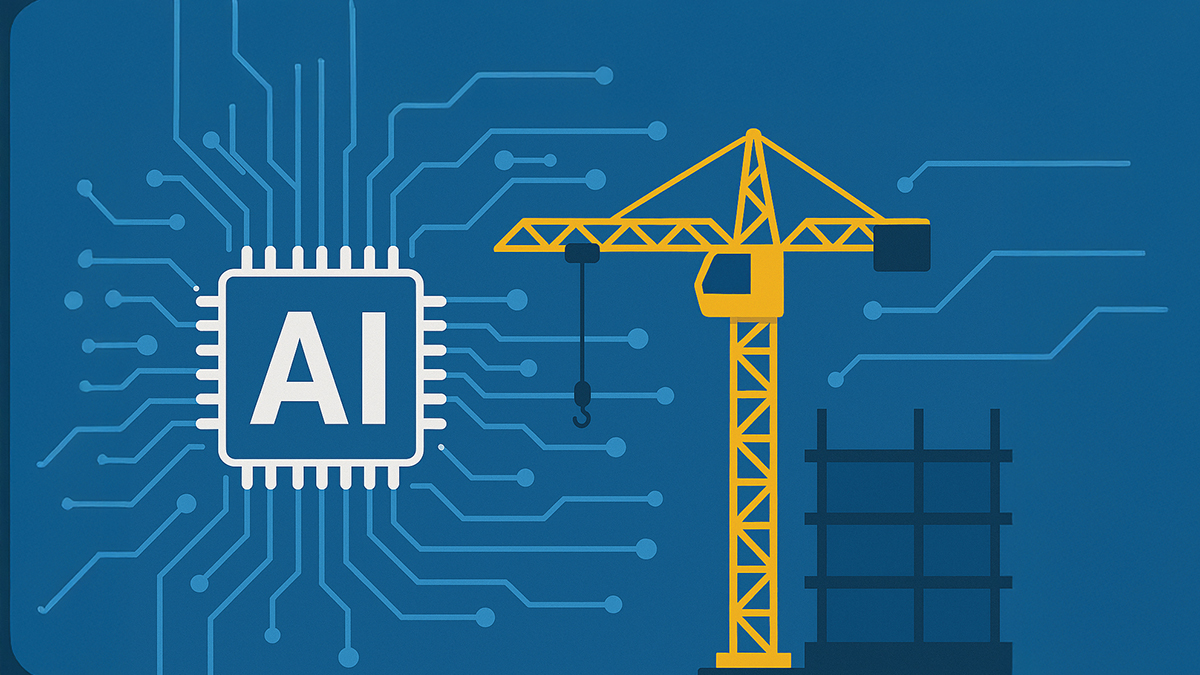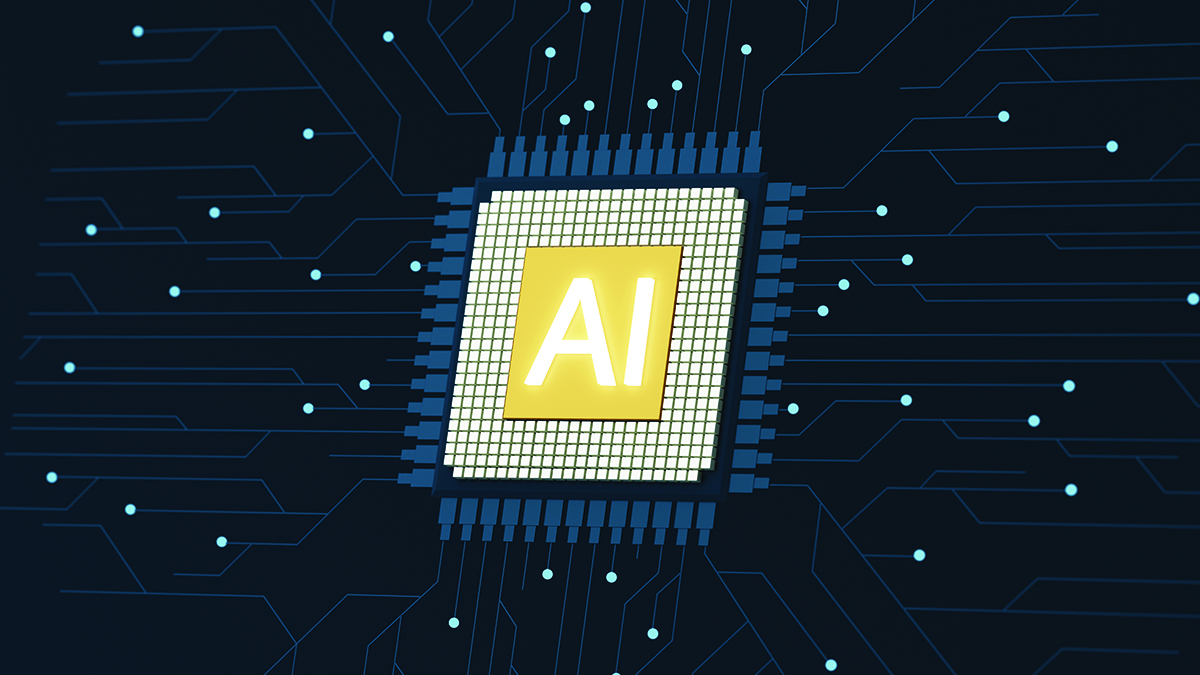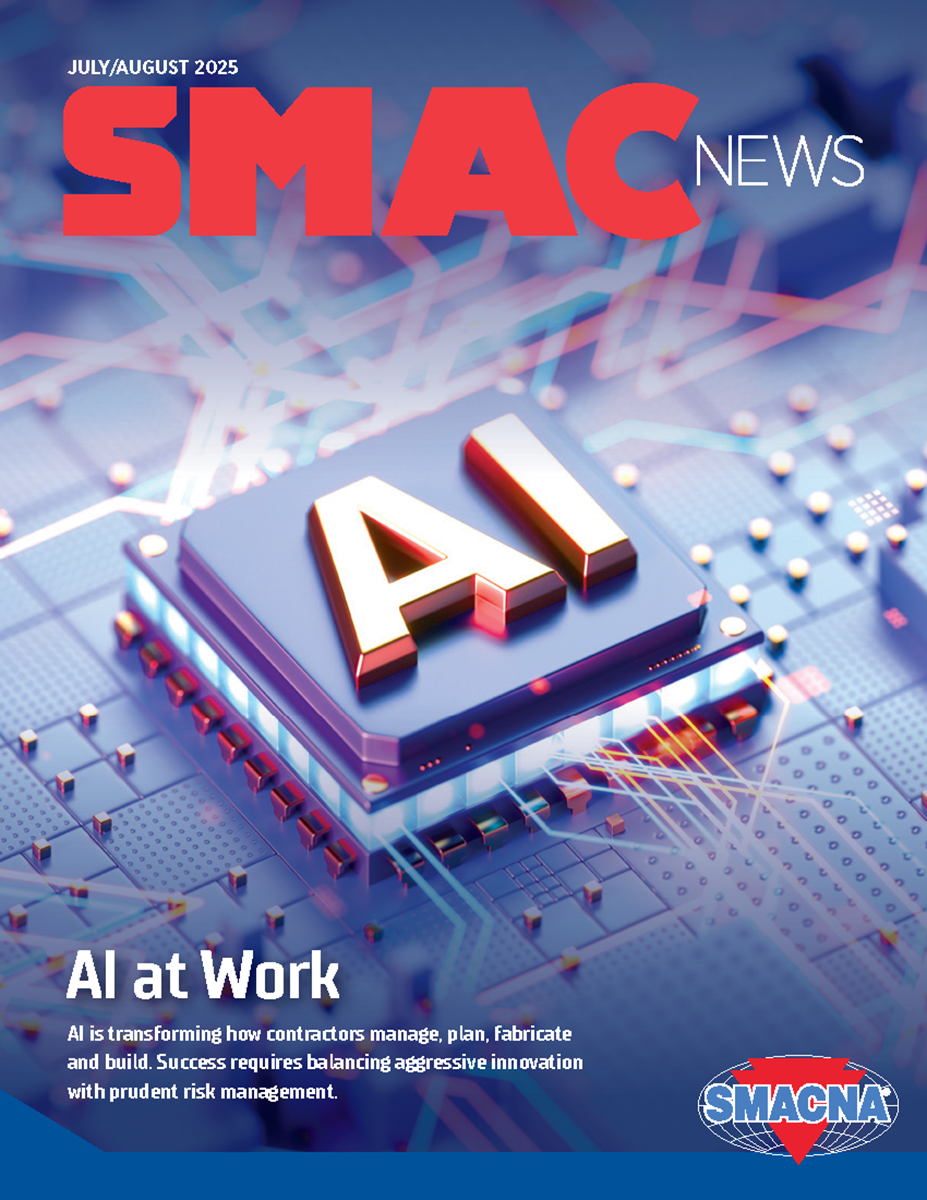Artificial Intelligence: An Introduction
Since late 2022, when ChatGPT was introduced, we’ve been hearing more and more about AI, usually with more hype than explanation.

Since late 2022, when ChatGPT was introduced, we’ve been hearing more and more about AI, usually with more hype than explanation. In this article, we’ll explain AI from the ground up, so you can be armed with a solid foundation of understanding as more and more products and pitches come your way.
What is AI?
First things first: what is AI?
You’ve probably heard a few explanations, and they often trip over themselves trying to explain this or that model or algorithm. AI isn’t actually one technology. Think of it as a collection of approaches that seek to create machines that can think. We haven’t been able to do that completely, but along the way AI has enabled very useful tools, like recognizing email spam, understanding normal language, automating some tasks and more.

AI is still just software though, not magic, not an ‘digital brain.’ A useful definition that’ll help you think about AI is: AI is software that can do unique and useful things because it learns from data.
AI represents a fundamental shift in how software systems operate and make decisions. Unlike conventional software that follows predetermined rules, AI systems learn from data, adapt to new situations and improve their performance over time without explicit programming for every scenario.
Today's most advanced AI systems include Large Language Models (LLMs) like GPT o3, Claude and Gemini, which can understand context, engage in complex reasoning and even tackle multi-step problem-solving tasks.
In a construction context, AI shows up in various forms: everyday chatbots that summarize documents, draft emails and can do research, and proprietary systems like computer vision systems that monitor job sites for safety violations, natural language processing tools that analyze contracts and specifications, predictive analytics that forecast project delays, and autonomous equipment that performs specific tasks with minimal human intervention. Since late 2024, we’ve seen more and more of a move to introduce “agents,” which are AI tools that automate workflows, especially the tedious day-to-day tasks that involve documents.
HOW is it different to "normal" software?
Traditional software operates on instructions, in the form of code. Developers write clear and complete instructions: if X happens, do Y, and the software does exactly that and only that. Every possible scenario must be anticipated, programmed and tested. This approach works well for predictable tasks but breaks down when dealing with the complexity and variability inherent in the real world. It is impossible to write enough rules to recognize a face, let alone millions of faces, yet AI does this all the time.

AI makes software work in three main ways. First, AI systems learn from examples rather than following rigid rules. This is why we often hear so much about ‘data’ in the context of AI. It takes a lot of data for AI to learn anything useful, often hundreds of thousands of labeled, organized data points.
Where a traditional software system might need thousands of lines of code to identify safety violations, an AI system can learn to recognize them from examples, generalizing to new scenarios it hasn't seen before.
Second, because of this learning from data vs. instructions, AI is much better at processing unstructured data: the messy, real-world information that makes up most of what we encounter daily. Things like images from job site cameras, handwritten notes, voice commands, architectural drawings and natural language in contracts all represent unstructured data. We call it “unstructured” because it isn’t neatly in rows and columns, like excel data or a database. These examples would be impossible to process at any scale with traditional programming. AI can extract meaning from these natural, messy sources, turning chaos into actionable insights.
Third, and perhaps most importantly, AI systems improve over time through continuous learning. As they process more data and receive feedback on their predictions, their accuracy and capabilities expand. This adaptive quality means AI solutions can evolve with changing project conditions, regulations and industry practices without requiring manual reprogramming. A safety monitoring system, for instance, becomes better at identifying hazards as it analyzes more incidents and near-misses across multiple job sites.
What is AI good at?
We find in industry after industry, AI is good at things that make up for limitations that humans often have. Because AI can quickly recognize patterns, processing documents at lightning speed, modern AI systems can process millions of data points, from historical project records to real-time sensor readings, identifying trends and correlations that would take human analysts months to uncover. More realistically, AI can do things contractors just wouldn’t do because of the investment in time and money. Because it is software, the cost to do these things drops, and suddenly they become possible. In fact, that is the core of what we see AI changing in the near term: allowing contractors to control risk more completely because they can automate more of the tedious, time-consuming work that goes into analyzing, error checking and summarizing documentation that can so often be a huge source of risk.
To expand on that, here’s a quick list of some of the things AI excels at:
- Natural language conversation: At the heart of the current AI wave is the ability for people who are not software developers to work directly with AI. We can ask it questions, get web searches summarized, get images created, and receive a growing list of everyday tasks that are now at our fingertips.
- Document processing and analysis: AI can analyze contracts, specifications, RFIs and change orders at superhuman speeds, automatically extracting key information, identifying conflicts and flagging potential issues. AI-powered systems can review thousands of pages of project documentation in minutes, ensuring nothing falls through the cracks.
- Safety monitoring: Computer vision systems powered by AI can continuously monitor job sites through existing cameras, detecting safety violations in real-time. This includes things like workers not wearing proper PPE, unsafe behaviors like working too close to moving equipment and so on. Predictive safety analysis, where AI analyzes historical safety data from previous accidents, near misses and safety observations, can identify patterns that predict future risks.
- Quality control: AI-powered image recognition can identify construction defects, measure installations against specifications and track progress with unprecedented accuracy. Drones equipped with AI can survey entire job sites, comparing actual construction against BIM models and identifying deviations before they become expensive problems.
- Automation of repetitive tasks:. AI can automatically generate quantity takeoffs from drawings, analyze and create optimal construction schedules considering countless variables, match invoices to purchase orders, and even draft routine correspondence. These time savings compound across projects, dramatically improving productivity.
- In all of the above instances, it is important to point out that no system is perfect, and we too often expect AI to be better than a human would or even be as good as an experience professional would be. In reality, AI systems are still just software, and they are good at automating parts of the work, supporting the professionals, but there are definite limits that users encounter quickly when they trust AI with too much, too fast.
What is AI not good at?
Despite its impressive capabilities, AI has serious limitations that contractors must understand to use it effectively. The core of these limitations is that AI doesn’t think like humans do, in fact under the hood, AI is nothing like the human mind. The fact that it can produce coherent, intelligent responses sometimes misleads users, but never forget it is software. Here’s a list of some of the limitations to watch out for:
Made up information: Sometimes called “hallucinations,” AI will provide answers to questions even when it doesn’t know the answer. It does this with complete confidence, so it can be difficult to spot. This behavior is because AI, specifically LLMs like ChatGPT, are built from the ground up to provide answers. If they don’t know the answer, they’ll make one up that seems right.
This can be almost entirely avoided by pointing the AI at real data, like a document or website, and asking better questions, but it is still a problem to be aware of.
Understanding of the project: AI does not understand the world, so it will have no idea what certain things imply or what should be included or not. This is another place where AI being fundamentally different to human minds is important. You cannot ask AI a very high level question like, “Show me all the risks in this project manual” and get a good response, it’s just beyond the AI’s capability.
Creative problem solving: While AI can generate variations on existing solutions or combine known approaches in new ways, it cannot match human creativity when facing new challenges. When a unique structural problem arises on a job site or when coordinating complex trades requires innovative sequencing, human expertise and creativity are essential.
Complexity: AI can handle messiness much better than any other software, but it is nowhere near as capable as even an untrained human. This is why robotics is still limited to situations where the site has been cleared (like layout robots) or otherwise simplified. This is true also concerning what you ask AI to help with — involve too much complexity and you get a response that is not useful.
What should contractors know?
First and foremost, AI is a powerful tool, but it is not a replacement for human expertise. AI will not replace the fundamental need for a skilled workforce, expertise or lived experience. Successful implementation requires viewing AI as a partner that handles routine analysis and monitoring, while humans focus on complex decision-making, relationship management and creative problem-solving.
For many applications, data quality serves as the foundation for AI effectiveness. These systems are only as good as the information they're given. Start with areas where your documents and data are in good shape, then move from there.
Where quality data is a struggle, start where the stakes of failure are lower and are likely to be caught, like marketing and sales, where AI can automate everything from proposal preparation to images and emails. The efficiency gains for these chronically understaffed functions are often significant.
Implementation requires strategic planning and patience. Rather than attempting wholesale AI adoption across all operations, successful contractors start with pilot projects in specific areas. Common starting points include marketing, safety monitoring, document analysis or predictive maintenance for equipment. These focused implementations allow teams to learn the technology, demonstrate ROI and build confidence before expanding to other areas. While nearly all companies are investing in AI, only 1% of leaders call their companies "mature" on the deployment spectrum.
Like all technology, training and change management will be crucial for AI adoption success. Address fears about job displacement directly and emphasize how AI augments rather than replaces human workers. The change management playbook is pretty well understood:
- Invest in training programs that build both technical skills and confidence.
- Create champions within your organization who can demonstrate AI's benefits and support their colleagues.
- Align incentives to allow for time to adopt
Security and privacy demand serious attention in the AI era. AI systems often require access to this data to function effectively. Contractors must understand how their data is being collected, stored, processed and protected. Key considerations include:
- Where is data stored?
- Who has access?
- How is it encrypted?
- What happens to data after project completion?
- Can competitors potentially access insights derived from your data?
Vendor selection requires careful evaluation. The construction technology market is flooded with AI solutions, but not all deliver on their promises. Look for vendors with specific construction industry expertise, proven track records and verifiable case studies. Because of the hallucinations, and security issues mentioned above, require that vendors show how they evaluate their AI for accuracy and explain it in non-technical terms, it should not be rocket science. Similarly, require they explain data security, including if contractor team members leave.
Future-proofing your AI strategy means staying informed about rapid technological advances while maintaining focus on fundamental business needs. In 2025, models will do more, and they will do it even better, with capabilities expanding monthly. However, avoid chasing every new feature or trending technology. Instead, maintain a clear vision of how AI serves your core business objectives: completing projects safely, on time and within budget.
Finally, remember that AI adoption is a journey, not a destination. The technology continues evolving rapidly, and best practices are still emerging. Maintain a learning mindset, regularly reassess your AI strategy and be prepared to adjust as you gain experience. Connect with peers using AI in construction to share lessons learned and avoid common mistakes. The contractors who thrive in the AI era will be those who thoughtfully integrate technology while maintaining their focus on the fundamentals of good construction practices.
Published: August 28, 2025
IN THIS ISSUE
A SMART Partnership
SMACNA's President reflects on his long history of collaboration with SMART General President Michael Coleman.
AI in Construction: Navigating Opportunities and Risks for SMACNA Contractors
These next few years will be important for the construction industry, as artificial intelligence transforms key elements of how contractors operate.
ARCHITECTURAL: Crafting a Custom Vision in Steel
Thompson Solutions Group brought Plan Architecture’s wood-look steel façade to life at Little Priest Tribal College, combining precision, speed and SMACNA-backed expertise.
Artificial Intelligence: An Introduction
Since late 2022, when ChatGPT was introduced, we’ve been hearing more and more about AI, usually with more hype than explanation.
HVAC: Welded With Precision, Driven by Purpose
MechOne builds more than ductwork as it shapes the future of Colorado’s HVAC industry.
INDUSTRIAL: Leading the Charge
Toronto Sheet Metal Contractors Association member Black & McDonald installed HVAC systems and duct for Ontario’s first electric vehicle battery plant. The work required extensive communication with numerous trades.
Making AI Work: Tips & Tricks for Contractors
We are in the midst of another technology revolution, one as important as the internet or mobile phones, with artificial intelligence (AI) tools becoming increasingly accessible and practical for contractors of all sizes.
Progress, Partnerships and Possibility
SMACNA's CEO examines some of the association's work in critical subject matter areas.
RESIDENTIAL: How Zipf-Air Boosted Profits by Going Residential
By flipping his business model and focusing on customer service, high-end brands and Indoor Air Quality, John Zipf turned a commercial-heavy HVAC company into a thriving residential operation.
Trump Backs Biden-Era EO Mandating PLAs for Large Federal Construction Projects
In a surprising continuation of his predecessor’s labor policy, President Donald Trump’s administration announced on June 12, 2025
Welcome New SMACNA Members
What’s in H.R. 1, The New Tax Bill, and What It Means for SMACNA Contractors
Workforce Evolution Trends: What Construction Leaders Should Know
The dynamics of the construction labor workforce are shifting, fueled by a growing labor shortage, evolving employee expectations and a sizable portion of the workforce nearing retirement.


